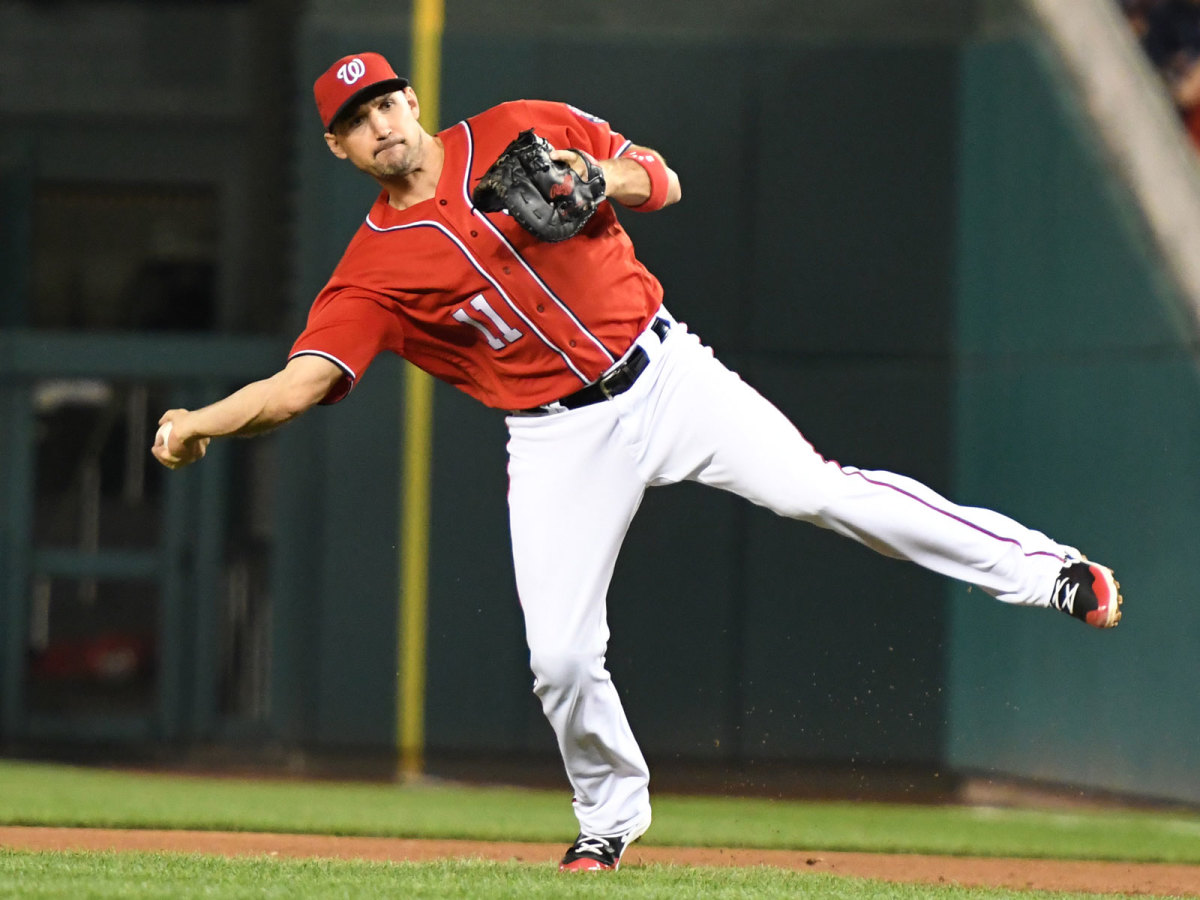How Nationals 1B Ryan Zimmerman Embraced Yoga, Got Healthy and Revitalized his Career

The time had come for Ryan Zimmerman to make a change. There were few positives for him to take out of a lost 2016, the worst season of his 12 in the majors. He set career lows in batting average, on-base percentage and slugging percentage and failed to break the 20-home run mark for a third straight year. A rib cage strain and a wrist contusion limited him to 115 games and made him a fixture in the trainer’s room instead of the Nationals’ lineup. In the span of just three seasons, Zimmerman had gone from a key cog in Washington’s franchise rebirth to a broken part in desperate need of repair or replacement.
It was the injuries that had Zimmerman most worried. He had managed only 271 total games over the last three years, or barely half the season on average, despite trying everything in his power to stay healthy over the course of the last three years. “You get to the point where you’re like, what do I have to do?” he says.
So as Zimmerman assembled his offseason training plan last winter, he decided to incorporate something he’d tried several times but never mastered, something he found so difficult that his commitment to it rarely lasted. Twice a week, he decided, he would suck it up and struggle his way through the exercise that killed him like no other.
He would embrace yoga.
“I told myself, you know what, I’m going to stick with it no matter what—no matter how much I hate it, no matter how terrible at it I am,” Zimmerman says. “It’s the hardest thing I do for an hour. But after I’m done, it’s definitely worth it. By the end of last offseason, I really started to notice myself getting better at it and how much better I felt in my body.”
2017 Major League Baseball Awards: Nolan Arenado, Jose Altuve Are Your MVPs
Despite a winter’s worth of work and rave reviews from his team—“He came into spring training in really great shape,” says hitting coach Rick Schu—you won’t mistake Zimmerman for the Maharishi, but he’s had opposing pitchers trying and failing to find inner peace all season long. Heading into the final weekend of the season, the 33-year-old first baseman is hitting like he did in his heyday, with a .296/.350/.553 line across 568 plate appearances. His 129 OPS+ is his best mark since 2010, and his 34 home runs are not only a new career high, but also just two fewer than he hit from ‘14 to ’16 combined. All that has helped Washington win a second straight NL East title and earned Zimmerman his second All-Star team nod—his first in seven years.
But the number that best illustrates Zimmerman’s resurgence is 141—as in, games played on the season. It’s his highest figure since the 2013 season, which was also the last time he approached these heights on offense. To Zimmerman, that’s no coincidence.
“This game’s hard enough to play when you’re getting consistent at-bats and able to go out there every day,” he says. “You’ve got to be able to create a rhythm, get into a groove. The last three years, I’d play for a month and then have to take three or four weeks off. You’re coming back in when [pitchers] are in midseason form and you’re basically doing spring training at the big league level.”
“He’s got a complicated swing with a big leg kick, a lot of movement going on, so for him to stay consistently in the lineup keeps his timing better,” Schu says. “He’s able to have more ups when he’s playing all the time.”

As Zimmerman bashed his way through a blazing-hot April—.420/.458/.886 and 11 homers in 96 plate appearances—the questions kept coming from reporters about the secret to his success. Had he overhauled his swing? Changed his approach? Put more of an emphasis on hitting it in the air? Particular fixation was paid to his launch angle—the Statcast measurement that charts the angle at which a ball leaves a player’s bat—and its upward tick from last year. A resurrection like that doesn’t just happen overnight. Zimmerman, though, says all is more or less the same from before.
“My goal has always been to put the barrel on the ball,” he says. “I wouldn’t say I made a consistent effort to try to hit the ball in the air. You make adjustments as you go on, but I didn’t come to spring training this year and try to hit every ball into the top of the cage.”
“Last year he had a lot of hard-hit ground balls. He wasn’t staying tall as much,” Schu says. “Now he’s staying taller and in better position to get the ball in the air and drive it out of the park.”
If anything has changed, it’s been Zimmerman’s understanding of himself as he finishes his 13th year in MLB. Once upon a time, he was a 20-something slugger who could shrug off injuries and train however he wanted. From his rookie season in 2006 to ’13, he averaged 140 games a year as one of the National League’s most productive and durable third basemen. But after five separate disabled list stints over the last three years, he knows now that he has to be careful. “The days where I go into the weight room and lift a lot of weight and do fun stuff is over,” he says, laughing. “It’s so much more functional now.”
That includes the twice-a-week private yoga sessions in the winter and the once-a-week workout during the season. With a personal instructor guiding the way at his Virginia home, Zimmerman guts his way through Downward-Facing Dog and Warrior I despite some stiffness—“I’m still not very flexible,” he says—and the challenge of keeping up with his wife, Heather, a seasoned pro. “She’d never say it, but I think she enjoys being so much better than me at something, and I’m so competitive that it kills me to watch her just dominate,” he says.
Jose Altuve Reaches 200 Hits for Historic, Legacy-Cementing Fourth-Straight Year
Zimmerman may hate being second-best, but it’s hard to argue with the results. It’s been nearly a decade since he was this good, when he bashed 33 home runs and drove in 106 as the only good thing about a Nationals team that lost 103 games. Now he’s doing it for a squad that has World Series aspirations—if, that is, he and the franchise can get past the Division Series for the first time ever. Last year, Washington ran into the buzzsaw that was Clayton Kershaw and the Dodgers; this year, the Nationals get the unenviable task of dethroning the reigning champion Cubs.
If the Nationals can bring a championship to Washington for the first time in 93 years, then Zimmerman will likely have played a crucial role. The division titles of 2014 and ’16 came about with him as more of a spectator than a contributor—a hard place for him to be. “You’re still happy for your teammates, but deep down, you want to be a part of that, and it kills you when you’re not,” he says. He’s a part of it now, as protection for Bryce Harper in the Nationals’ deep lineup and as quiet veteran leadership in the clubhouse. Ironically, he’s been one of the few consistent healthy bodies on a team that’s been ravaged by injuries all season. And for the first time in a while, he feels good as the calendar flips to October—and, perhaps unexpectedly, ready for seasons beyond that, too.
“I never thought I’d be here, honestly,” he says. “If I can stay healthy and on the field, I feel like I have a lot left in the tank.”
The last sequence of a typical yoga class is savasana, the corpse pose, in which you sit on the floor and then lie down as you slowly stretch and exhale. The idea is to relax the body after all the contortions you just put it through—to let everything go quiet. After an hour of hard work, this is Zimmerman’s favorite moment—“When you’re laying on your back for those three or four minutes and you know you made it,” he says.
And once he’s caught his breath, Zimmerman rises from the corpse pose, back from the dead.
